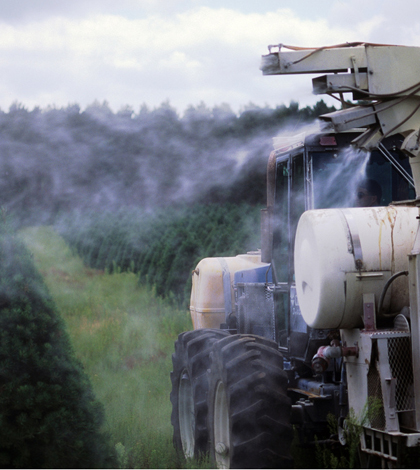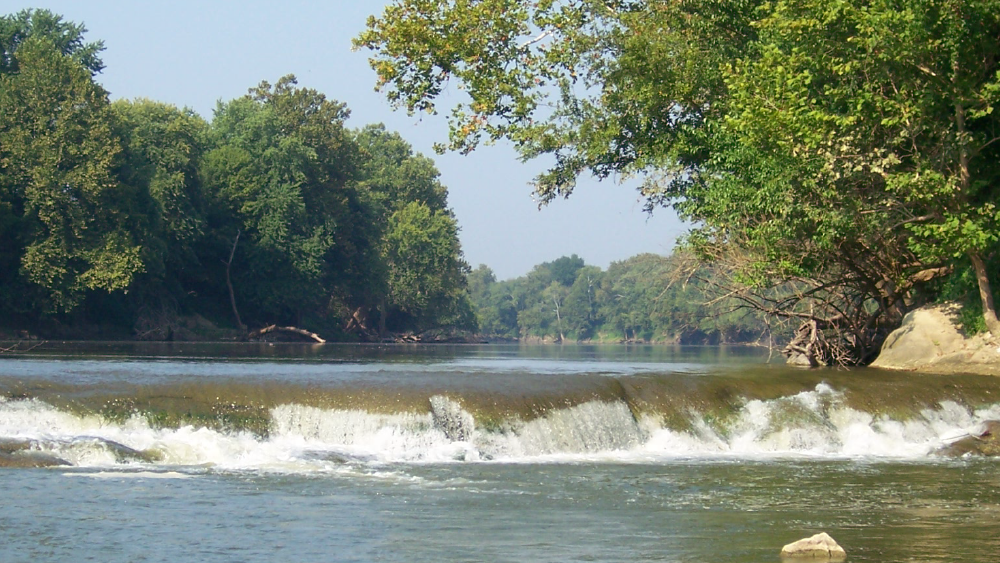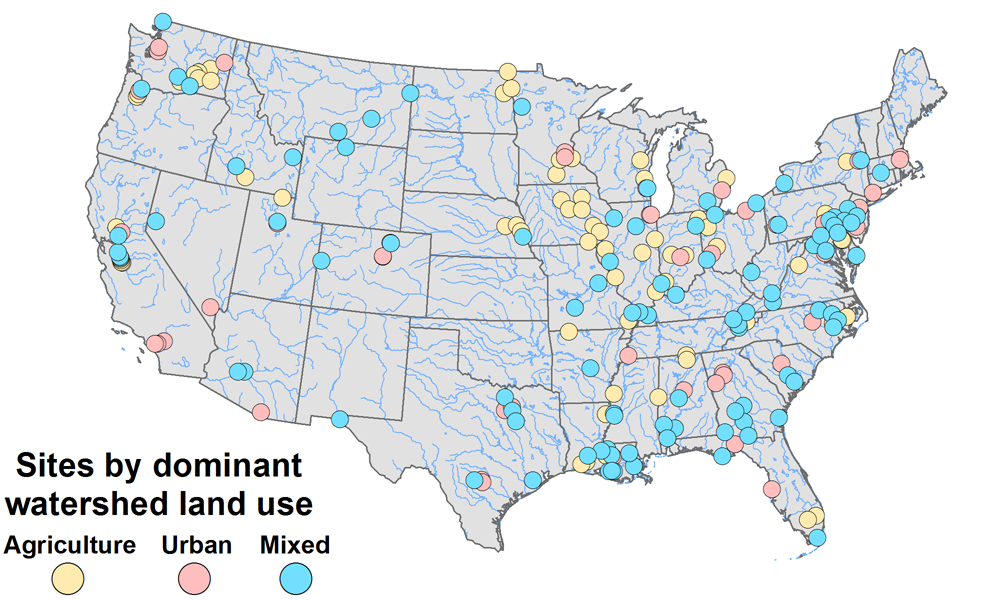Pesticides still threaten aquatic life in U.S. rivers and streams

Pesticide application at a Wisconsin Christmas tree farm (Credit: Wisconsin DNR, via Flicker/CC BY-ND 2.0)
The chemicals used to protect crops and repel insects on land are poisoning the country’s waterways and could spell trouble for aquatic life. The U.S. Geological Survey conducted their second decade’s worth of stream pesticide monitoring for the National Water Quality Assessment program, and turned up some discomforting trends in the process.
Chief among these is the fact that, as measured between 2001 and 2011, 90 percent of urban streams in the U.S. contain a high enough concentration of pesticides to impact fish and aquatic invertebrates. This is up from 53 percent in 1992-2001. The study found the U.S. uses more than 500 million pounds of pesticides annually.
Recognition of new pesticides, such as fipronil and dichlorvos, and a decrease in total sampling sites can explain part of the discrepancy between the first and second decades, said USGS hydrologist Wesley Stone.
“In the second decade we had a number of pesticides become registered for use that weren’t assessed during the first decade,” Stone said. “With the recent paper we were updating that information with the second decade and then comparing backwards in time.”

Hindostan Falls, on the east fork of the White River in Indiana. (Credit: John T. Wilson/USGS)
Most of the trends revealed by the study involve greater or lesser usage of certain pesticides by society over time. One pesticide, diazinon, appeared frequently in urban streams during the first decade of testing, Stone said. However, by the second decade, it was found in much lower concentrations.
The NAWQA program attempts to characterize major river basins in the U.S. by sampling at sites that represent a range of agricultural and urban environments. Limited resources necessitate careful selection of these sites, as well as which pesticides are tested.
“It’s always a challenge based on our funding levels,” Stone said. “As funding levels grow tighter and tighter, it makes us prioritize what pesticides we monitor and which ones we can’t.”

Sites surveyed for the pesticide study (Credit: USGS)
Data used for the study were gathered from 125 stream sites by USGS field teams whom Stone described as “hundreds of people doing an excellent job.” During the second decade, 123 pesticides were targeted for analysis.
While the NAWQA program’s pesticide study paints a useful picture of pesticide trends across the country, Stone acknowledged that more specific water quality analyses may be available on a regional level.
“This is a general study of what we saw across the country,” Stone said. “There are USGS studies that are regional or local, and they will collect pesticide information that we may not have included in the study.”
Top image: Pesticide application at a Wisconsin Christmas tree farm (Credit: Wisconsin DNR, via Flicker/CC BY-ND 2.0)




0 comments